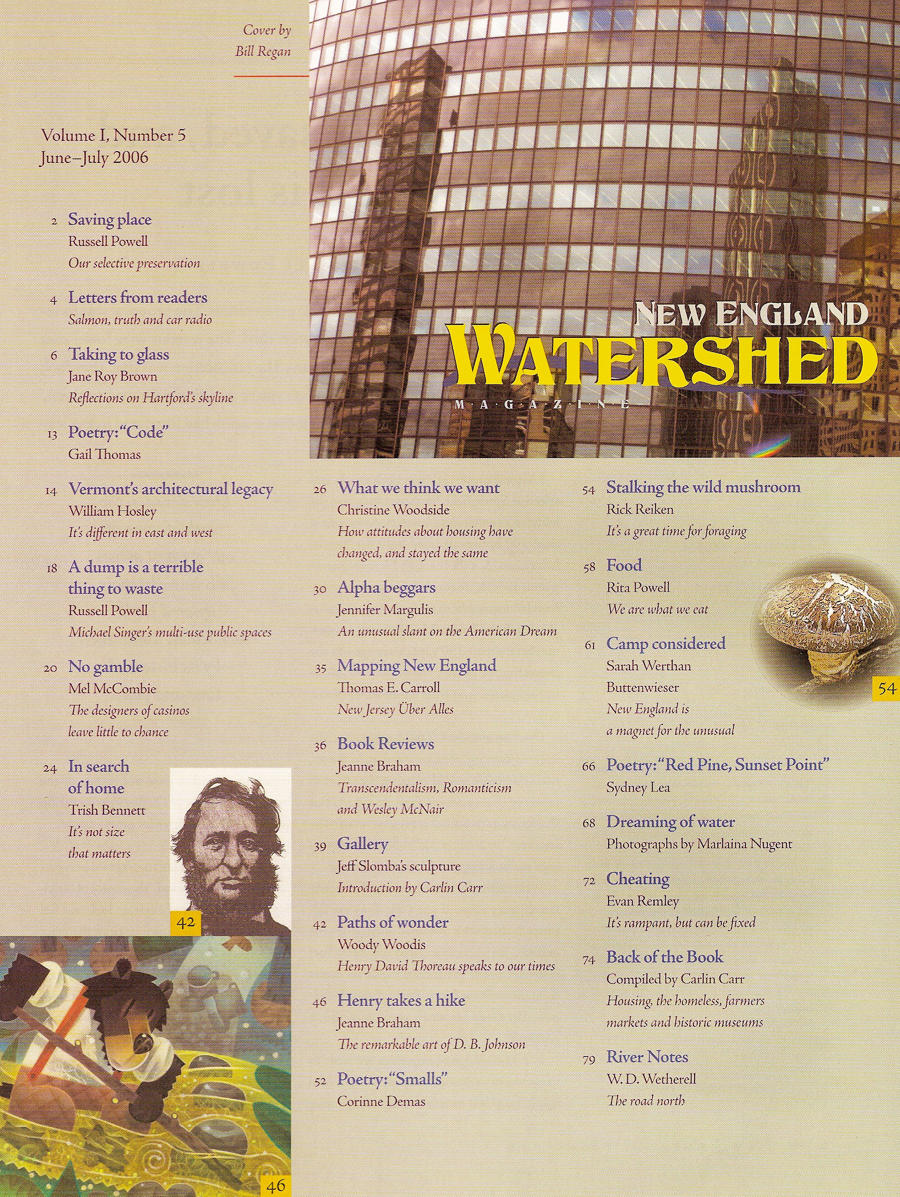What is saved, and what is lost
BY RUSSELL POWELL
THE TOPIC WAS historic preservation. The proposal was to replace worn windows with vinyl. The reasons were lower cost and ease of maintenance. The justification was that “they look almost like wood, unless you’re standing right next to them.” The mood was irritation, that a historic commission had interfered in any way with a property owner’s rights.
Historic preservation is both costly and selective. Springfield, Massachusetts, is in the midst of an ambitious plan to tear down more than 100 houses deemed unfit for human habitation. A walk through New England’s woods reveals dozens of overgrown stone foundations, stubborn reminders of centuries-old abandoned homes. Had the house in question been situated 50 yards away, outside the town’s historic district, the owners could have stapled plastic over their windows without a care.
Our housing stock is fluid, subjective. The irony of the vinyl windows is that, in theory, their durability would enhance the effort to preserve that of which they are a part. But this forces us to consider: preserve what? The structure, the architectural style, or the experience the building provides or represents?
Preservation without structural integrity is a slippery slope. If vinyl windows are approved, then why not vinyl siding? If cost and ease are paramount, why not AstroTurf instead of lawn? What meaning do we derive from the staircase Mark Twain climbed—especially when its worn steps have been replaced?
Is it knowledge of ourselves we wish to preserve, or craftsmanship, or insight into inspiration? Is it merely nostalgia for simpler times, or a need to ease our minds of the burden of memory? Or does preservation feed our collective drive for immortality?
* * *
A HOUSE HAS A PUBLIC IDENTITY that is part aesthetic, part historical. The choice of building materials bestows a certain look and feel that contributes to a town or city’s character and attracts like-minded future inhabitants (although sometimes this continuity is interrupted by utilitarian demands). How a community perceives a house imparts an equally powerful, if mutable, identity.
To many older residents in the town where I now reside, the 1910 house I live in is indelibly “the Woodward place,” a reference not to the original owners (whose name I do not know), but to a family who lived here for several decades until the 1980s. Since then there has been a succession of owners, some vaguely known (the people we bought the house from, the child’s drawing on the cellar walls), some anecdotal (the woman who died of cancer, the daughter who rode horses).
Five years later, I still wonder how much of it is really mine, and how much I am steward of traditions begun by families before ours. The worn paint and wooden steps on the cellar stairs, the dirt and dust in obscure corners, the odd crayon discovered beneath the baseboard—how long do previous inhabitants remain ingredients of a house’s flavor? I’ve heard it said that molecules breathed by Julius Caesar still circulate the globe today; surely a century-old home must retain some traces of its owners.
* * *
IT IS COMFORTING TO KNOW that other’s have come before us. The eloquent expression of a complex idea, half-formed in our own minds, by a thinker from a previous century, preserved and handed down, extends the possibilities of community, makes us less alone. By not having to recreate the thoughts of Henry David Thoreau in each generation, we build a higher platform for new philosophers to explore the meaning of the heavens or to plunge into the depths of oceans of knowledge that remain beyond human understanding.
Science, math and other quantifiable subjects make the progress of this human chain abundantly clear. The humanities are less obvious, and over decades, the work of some of our greatest artists falls into disrepair, ignored for its vernacular, diminished by its historical time and place. Eventually it is there to be dusted off and resurrected, and we find ourselves once again visiting Hawthorne’s The House of the Seven Gables or walking with Thoreau to Cape Cod. It is a powerful feeling of connection, imagination and travel through time.
Would it be the same if, to preserve it, Hawthorne’s house were renovated with five gables (and, of course, indoor plumbing), or if Thoreau en route to Provincetown drove his Mini Cooper over the Sagamore Bridge?
Russell Powell is editor and publisher of New England Watershed.


